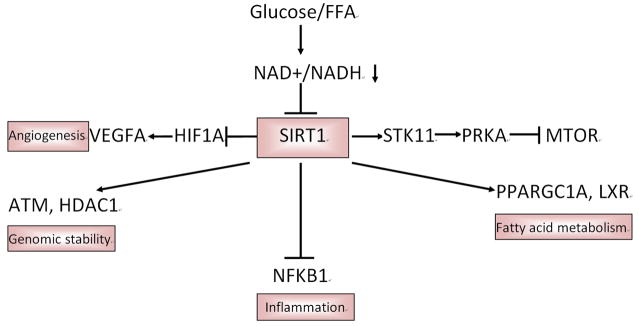Figure 3.
Roles of SIRT1 signaling pathway in cancer in type 2 diabetes. SIRT1 signaling pathway is an important energy sensing pathway bridging energy metabolism to DNA stability. In type 2 diabetes, the high level of glucose and FFA will reduce the level of NAD+/NADH, which then decrease SIRT1 activity. The decreased SIRT1 activity loses its stimulation of fatty acid metabolism and its ability to maintain genomic stability, as well as its inhibition of inflammation and angiogenesis. All of those alterations may initiate the formation and growth of cancer cell. FFA: free fatty acid; PRKA: AMPK, AMP-activated protein kinase; mTOR: mammalian target of rapamycin; HIF1A: Hypoxia-inducible factor; VEGFA: VEGF, Vascular endothelial growth factor; NAD: Nicotinamide adenine dinucleotide; SIRT1: NAD-dependent deacetylase sirtuin-1; STK11: LKB1, liver kinase B1; PPARGC1A: PCG-1alpha, peroxisome proliferator-activated receptor gamma coactivator-1 α; LXR: liver X receptor; NFKB1: NF-kappaB, Nuclear factor-KappaB; HDAC1: histone deacetylase 1

